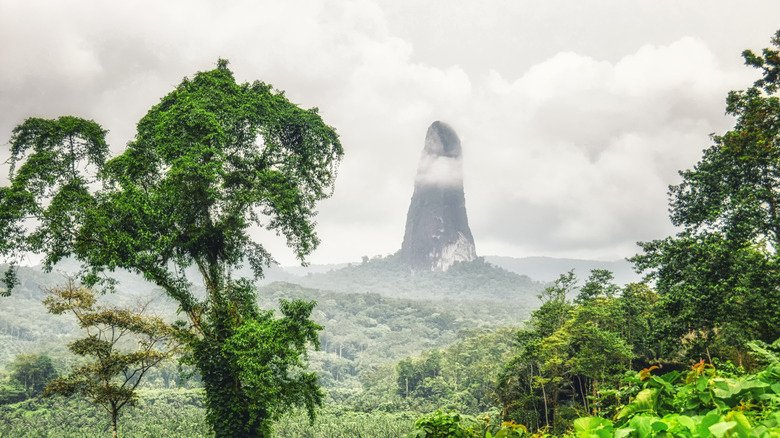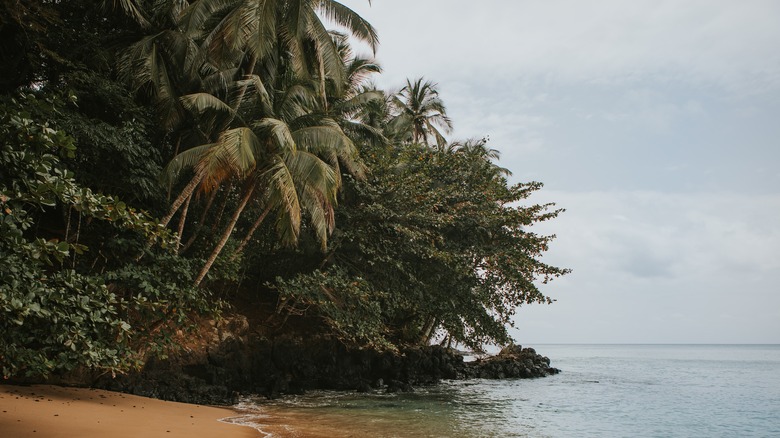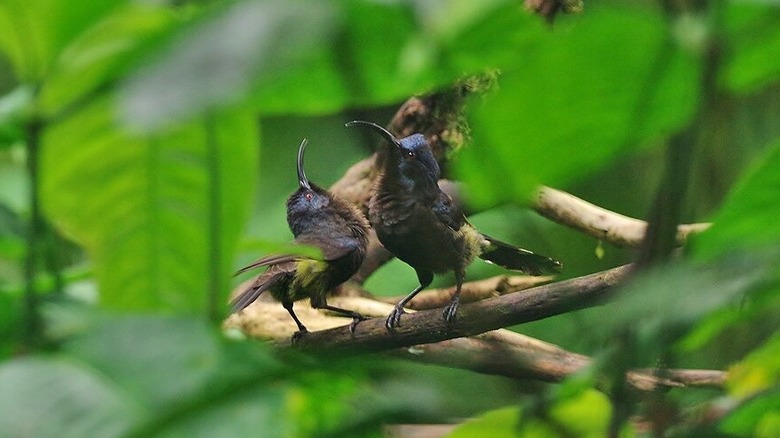Obô National Park offers its occasional visitors a glimpse of a world that exists nowhere else on planet Earth. It is the only national park in the Democratic Republic of São Tomé and Príncipe, an archipelago nation off the west coast of central Africa known by the nickname, The African Galápagos. Like the islands made famous by Charles Darwin’s studies, São Tomé and Príncipe are home to a staggering amount of unique plants and animals that evolved on the islands.
Obô National Park covers around a third of the island of São Tomé and some of Príncipe. These volcanic islands include vast swaths of lush rainforest, as well as mountains, natural swamps, mangroves, and even some savannah grassland. Although these islands are among the most important biodiversity areas in the world, they are still relatively unknown. While the Democratic Republic of São Tomé and Príncipe actively encourages responsible tourism, there are relatively few visitors to this island paradise. Unlike the Galápagos, where tourists arrive every year to snorkel with turtles, World Data reported that in 2019, the busiest year for the Democratic Republic of São Tomé and Príncipe, there were only around 35,000 visitors in total. In 2021, there were fewer than 17,500. Tourists who do make the journey to Obô National Park are in for an experience like no other.
Why Obô National Park has such incredible biodiversity

There is an incredibly biodiverse ecosystem waiting for those lucky enough to visit Obô National Park. The fact that it is located on a pair of remote islands might make it harder to get to, but that is also why it has such fascinating flora and fauna. Because islands are isolated from the rest of the world, the species that live there often evolve differently than those on the mainland, both because the physical environment isn’t the same and because they aren’t exposed to any species that can’t get across the ocean. The animals that thrive on an island may have surprising adaptations, or may even be entirely different from the species that live on the mainland. This is certainly the case in São Tomé and Príncipe, which is home to many endemic species, or plants and animals that live nowhere else in the world.
Some animals there, like the São Tomé olive pigeon and the São Tomé giant sunbird, are prime examples of a strange phenomenon called island gigantism, where animals on an island resemble a species on the mainland, but are much larger. Examples of the reverse, called island dwarfism, can also be found in the park. Animals like the São Tomé ibis are remarkably small compared to its closest relatives that live off the island.
See incredible plant life

The name of this national park comes from Obô, the high altitude Atlantic rainforest that makes up part of the park. Beneath these hot, humid forests, the volcanic soil on the islands is fertile. When walking through Obô National Park, visitors may spot more than 900 species of plants, 100 of which can only be found on the Democratic Republic of São Tomé and Príncipe. The most beautiful of these may be the orchids. As described by Forever Príncipe, a conservation group working to preserve and study the unique species on the island, the majority of these enormous tropical flowers can be found growing on trees. The park is also home to a rare variety of begonia that can grow to be almost 10 feet tall.
If the hundreds of wild-growing plant species are not enough, visitors to Obô National Park will pass through the Bom Sucesso Botanical Garden. This garden contains more than 1,000 samples of plants, including hundreds of plants that only grow in São Tomé.
Rare birds

thibaudaronson / WikiMedia Commons
One of the first things visitors often notice about São Tomé and Príncipe is the birdsong. The forests are alive with the calls of wild birds, some of which can be heard nowhere else on the planet. This isn’t just because it is an island. OboPark.com notes that while other remote tropical islands are often able to support animals that can’t live elsewhere, most comparable islands have only one or two endemic birds. São Tomé has 21.
Among the many types of birds that can only be found here is the Príncipe grey parrot. These large parrots have thrived on Príncipe, nesting in its forests and raising its chicks without fear of predation from humans or other animals. One reason for this is the lack of mammals in the park. On the ground, the only endemic mammal is a small shrew, while in the air, there are several species of rare bats. Instead, the islands are home to numerous birds and butterflies.
[Featured image by thibaudaronson via Wikimedia Commons | Cropped and scaled | CC BY-SA 4.0]

